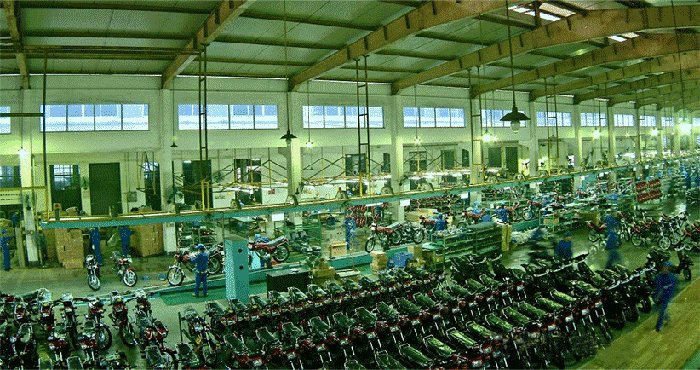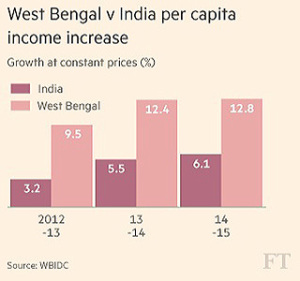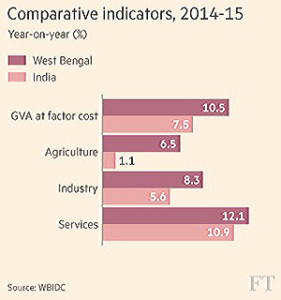February 26, 2016
West Bengal’s economy on the path of revival

Until recently the billboard slogan “Come to Bengal – Ride the Growth” that adorns the streets of Kolkata would have seemed like a bad joke to the few big investors still active in the city and its hinterland in West Bengal.
Better known abroad as Calcutta, this metropolis of 18 mn people was once the manufacturing and administrative hub of British India. But a Maoist insurgency and a hardline, Communist-led State Government elected in the late 1970s ushered in three decades of industrial decline, urban decay and official hostility to capitalism.
Investors, many of them commercially-minded Marwaris originally from western India, were plagued with death threats and strikes. The mood was so sour, according to West Bengal finance minister Amit Mitra, that 56,000 factories shut down. Abhirup Sarkar, an economics professor, says the state’s share of all Indian manufacturing fell from 12% to just 2%.
In the past three years, however, West Bengal’s government says it has been outperforming the Indian economy as a whole. Even private entrepreneurs see signs of a tentative industrial revival in a state that is home to 91 mn people – more than Germany – and is the main cargo hub for north-east India and the independent Himalayan nations of Nepal and Bhutan.
“For the first time in many years – in 35 years – you see a genuinely serious intent of the entire administration to become attractive for investors and investment,” says Sanjiv Goenka, chairman of RP-Sanjiv Goenka Group, a conglomerate with interests in electricity generation and distribution. “That’s a huge change.”
Among her first moves after winning power in 2011 was to appoint Mr Mitra to run the economy. He had previously headed one of India’s main business groups – the Federation of Indian Chambers of Commerce and Industry (FICCI) – and now holds no less than six economic portfolios in the State Government.
State tax collection has doubled in four years, while spending on infrastructure has tripled and deficits are down, he says. The statistics show that per capita income grew nearly 13% in real terms last year in West Bengal, compared with an all-India increase of 6%.
Around his own constituency, Mr Mitra says he found only one big factory when he was elected, down from more than 30 in the 1970s. Now there are half-a-dozen making steel pipes and chemicals and processing jute. “I see a resurgence of industry,” he says. “I see all the different ingredients which will probably now allow West Bengal’s economy to take off, which will allow us to compete with the top people.”
Ms Banerjee hosted a business summit in Kolkata at the start of this year that attracted investment promises of $37 bn in sectors ranging from mining and infrastructure to industry, IT services, real estate and tourism.
SK Birla, of the Birla conglomerate, describes Ms Banerjee as “a well-meaning lady” and says that after four years in office she understands much of what needs to be done to revive confidence. “She’s now honestly trying very hard to restore Bengal,” he says.
Excerpted from an article which first appeared in Financial Times on January 31, 2016
Graphs courtesy WBIDC and Financial Times



